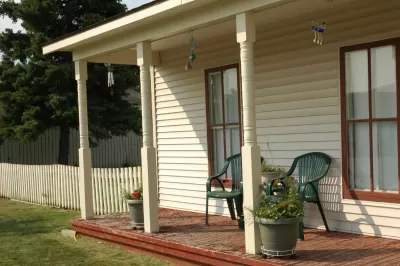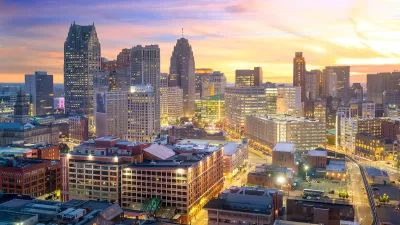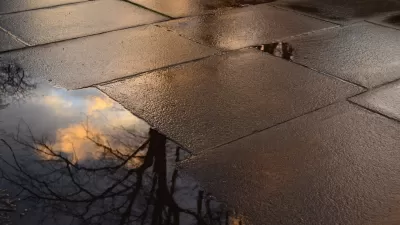Much more than just an extension of a house, the porch has long been a place of safety, intimacy, and communality.

Front porches have played an integral role in African-American life, writes Audra D. S. Burch. "From the narrow shotgun homes of Atlanta to the dormer-windowed bungalows of Chicago, the front porch has served as a refuge from Jim Crow restrictions; a stage straddling the home and the street, a structural backdrop of meaningful life moments."
Burch highlights the work of architecture scholar Germane Barnes, who has explored the role of porches in communities across the country. In Detroit, Barnes collected stories from African-American residents about the front porch as a place for socializing, a symbol of economic prosperity, and the site of cultural and neighborhood empowerment.
The diverse experiences include the story of Shamayim Harris, who spent time on her front porch reflecting on the struggling neighborhood around her:
That was the quiet beginnings of what is now Avalon Village, a green development project birthed on Ms. Harris’s porch and inspired by her youngest son, Jakobi Ra, who died in a hit-and-run accident 11 years ago. The growing village, composed of 32 abandoned parcels, now includes solar-powered streetlights, a park, an educational center and a marketplace for women entrepreneurs.
Another profile describes how Cornetta Lane decided to reclaim the history and identity of her Detroit neighborhood, Core City, by organizing a bike event where participants stopped at porches to hear residents’ stories. "I never considered doing this without the porch," Ms. Lane said. "It is a natural place for convening. You sit on the porch and tell stories. Porches are built for storytelling."
FULL STORY: On the Front Porch, Black Life in Full View

Maui's Vacation Rental Debate Turns Ugly
Verbal attacks, misinformation campaigns and fistfights plague a high-stakes debate to convert thousands of vacation rentals into long-term housing.

Planetizen Federal Action Tracker
A weekly monitor of how Trump’s orders and actions are impacting planners and planning in America.

In Urban Planning, AI Prompting Could be the New Design Thinking
Creativity has long been key to great urban design. What if we see AI as our new creative partner?

King County Supportive Housing Program Offers Hope for Unhoused Residents
The county is taking a ‘Housing First’ approach that prioritizes getting people into housing, then offering wraparound supportive services.

Researchers Use AI to Get Clearer Picture of US Housing
Analysts are using artificial intelligence to supercharge their research by allowing them to comb through data faster. Though these AI tools can be error prone, they save time and housing researchers are optimistic about the future.

Making Shared Micromobility More Inclusive
Cities and shared mobility system operators can do more to include people with disabilities in planning and operations, per a new report.
Urban Design for Planners 1: Software Tools
This six-course series explores essential urban design concepts using open source software and equips planners with the tools they need to participate fully in the urban design process.
Planning for Universal Design
Learn the tools for implementing Universal Design in planning regulations.
planning NEXT
Appalachian Highlands Housing Partners
Mpact (founded as Rail~Volution)
City of Camden Redevelopment Agency
City of Astoria
City of Portland
City of Laramie





























